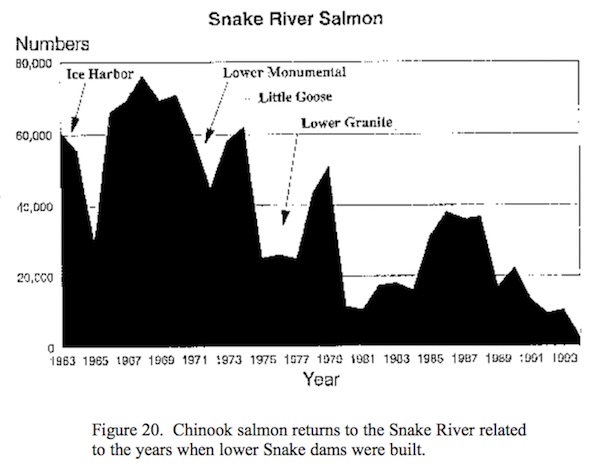forum
library
tutorial
contact

Organizations, Groups Weigh in on Why They Oppose
(and Approve) of Dam Removal in the Snake River
by Julian Paras
KPVI, February 12, 2021
|
the film forum library tutorial contact |

|
Organizations, Groups Weigh in on Why They Oppose
by Julian Paras
|
 "Let's work on this project together, but breaching the dams is not an option."
"Let's work on this project together, but breaching the dams is not an option."
That's what Vice President of the Idaho Farm Bureau said Wednesday after hearing about Congressman Mike Simpson's plan.
A plan that would include taking down the four Snake River dams to help restore the prosperity of salmon.
"That's a huge impact on roads, on the emissions to the environment," said President of the Idaho Farm Bureau, Bryan Searle.
Others say, it's far overdue.
"It's about time," said Nathan Small, who's part of the leadership with the Shoshone-Bannock tribe.
He says this isn't a recent issue either.
"We've been talking about this subject for decades," said Small.
Small recalled a conversation with Simpson where had asked the reason for this plan.
"When I asked him I asked 'So, what brought this on?' He said 'The fish aren't coming back. Nothing is working here,'" said Small.
The decline, according to Daniel Stone with the Shoshone-Bannock Fish and Wildlife Department, is due to the very structures themselves.
"The cause of that decline was the placement of these lower four snake river dams," said Stone.
And has been taking place since the 1920's with declines happening every time a dam was constructed.
"By the time the lower four snake river dams were completed in 1973, we experienced another 30 percent decline," said Stone.
"The snake river basin alone used to produce four to seven million salmon per year," said Stone.
That number now has dropped to 3,500 wild salmon, and 15-to-20,000 hatchery salmon, according to Stone.
Although some may see this plan as a surprise move by the congressman, others are saying not to judge too quickly on the decision.
"It's very comprehensive. It's clear that Congressman Simpson has put a lot of time talking to parties across the region, all of the interests he could bring together," said Justin Hayes with the Idaho Conservation League.
Hayes says this plan isn't to serve one side or the other, but everyone.
"It's an effort to provide the Northwest and Idaho with resources that we need to work together to solve problems," said Hayes.
An effort to also serve the state in the future, says Hayes.
"It is not just about salmon. It is not just about removing dams. It is about building the economy in Idaho that we need to ensure prosperity across the state," said Hayes.
learn more on topics covered in the film
see the video
read the script
learn the songs
discussion forum
